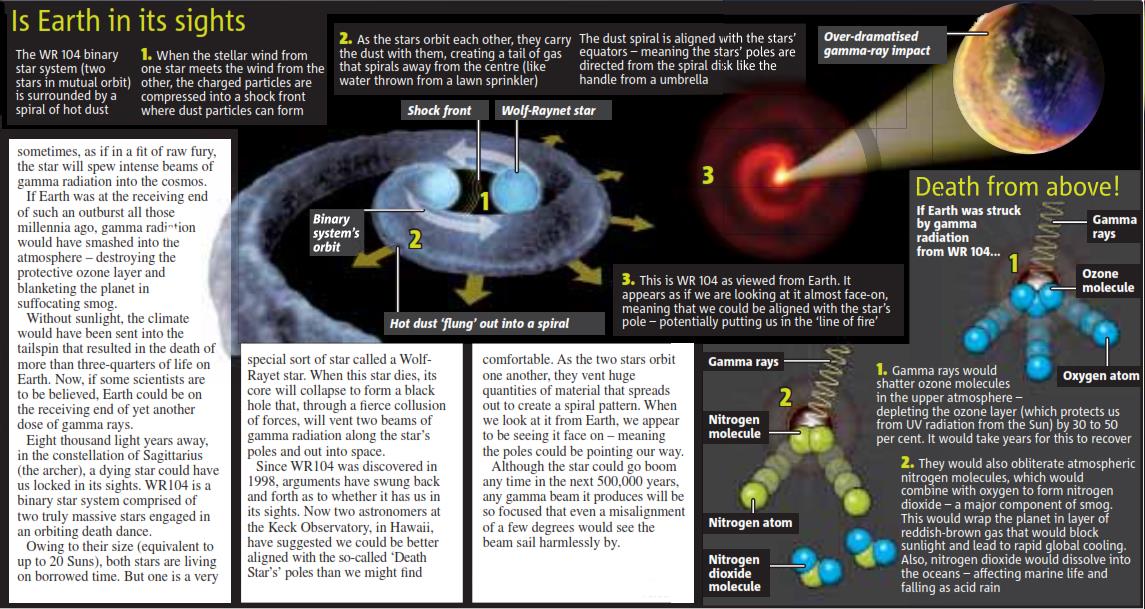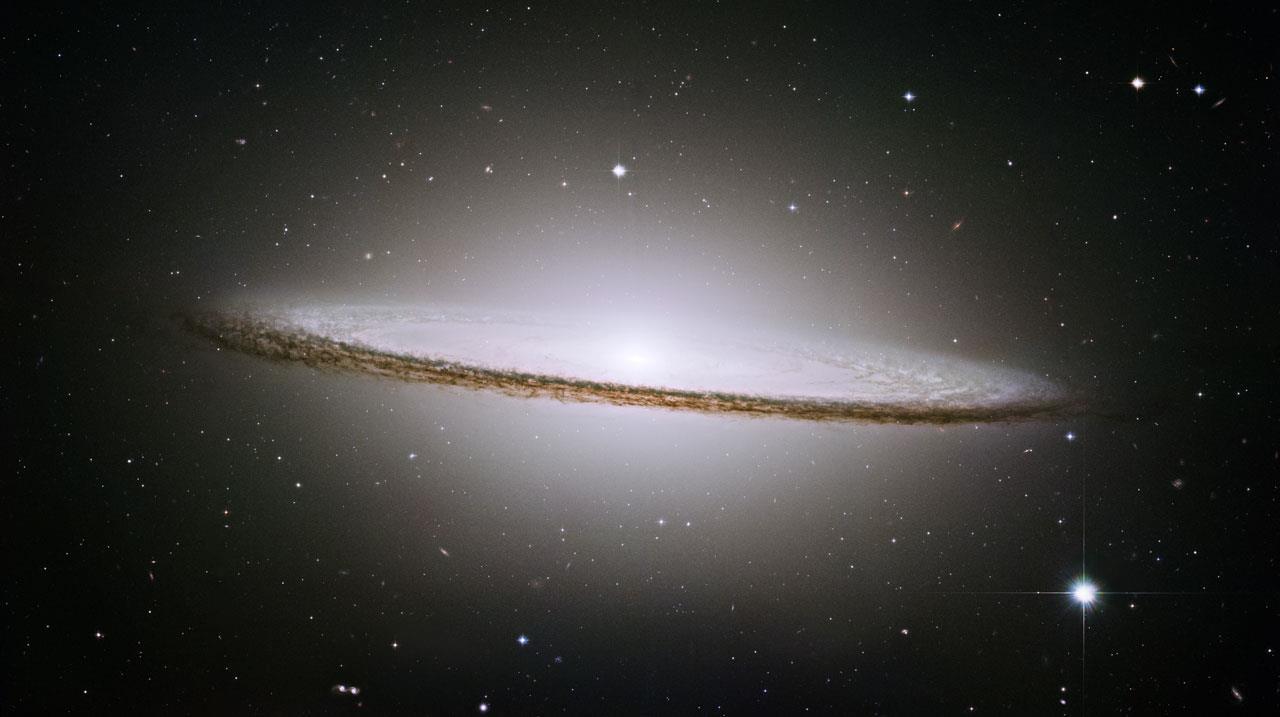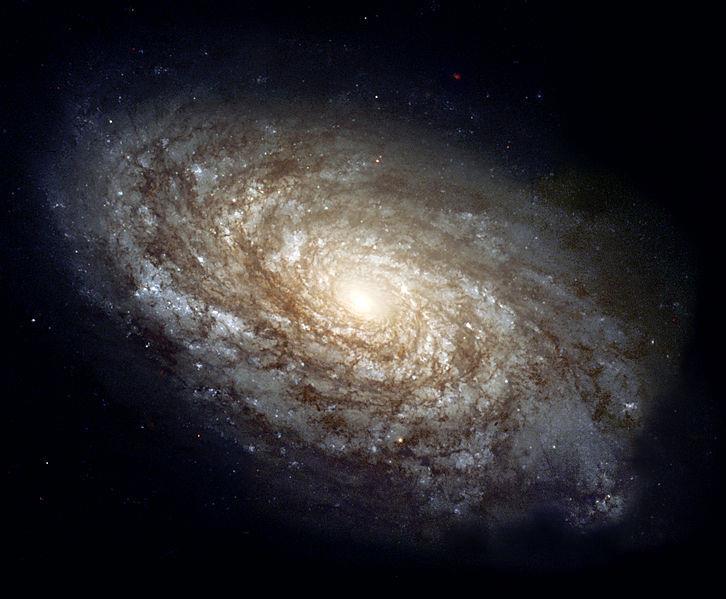Types of Galaxies
NGC 4826 (Black Eye Galaxy)
NGC 4826 is a typical Sa type galaxy with very tight spiral arms. As spiral galaxies are seen edge-on the large amount of gas and dust is visible as dark lanes and filaments crossing in front of the bulge regions.
M104
The Sombrero Galaxy (also known as M104 or NGC 4594) is an unbarred spiral galaxy in the constellation Virgo. It has a bright nucleus, an unusually large central bulge, and a prominent dust lane in its inclined disk. The dark dust lane and the bulge give this galaxy the appearance of a sombrero.
NGC 4414, a typical spiral galaxy in the constellation Coma Berenices, is about 55,000 light-years in diameter and approximately 60 million light-years away from Earth

The Whirpool Galaxy, or Messier 51 (M51)
M51 is well known to amateur astronomers as a face-on spiral with a smaller companion, a dwarf galaxy called NGC 5195. Both can be seen through amateur telescopes. The companion is thought to have helped define and shape M51′s spiral arms. M51 is located 25 million light-years away in the direction of the constellation Canes Venatici. It is 81,000 light-years across, in contrast to an estimated 100,000 light-years for the distance across our home galaxy, the Milky Way.
Messier 81 (M81)
M81 is another galaxy well known to those who gaze skyward with telescopes. Its pronounced arms spiral into its core. WISE highlights areas where gas and dust have been compressed in the arms, leading to the formation of new stars. M81 is 12 million light-years away in the direction of the constellation Ursa Major, and 94,000 light-years across.
Southern Pinwheel Galaxy, or Messier 83 (M83)
M83 is s a bit more than half the size of our Milky Way: 55,500 light-years across. Its overall structure is the Milky Way, with most of M83′s stars, dust, and gas in a flat disk ornamented by winding spiral arms. This galaxy is classified as a barred spiral because, in addition to a central bulge of stars, it has a central bar-shaped region of stars. It is 15 million light-years away in the direction of the constellation Hydra.
NGC 628, or Messier 74 (M74)
M74 has been called the perfect spiral for its exceptional symmetry. It’s also known for the lightweight black hole at its core. Most galaxies, including our Milky Way, have supermassive black holes at their cores - millions of solar masses collected in a small area - but the black hole in the center of M74 is thought to have a mass equal to only 10,000 suns. M74 is located between 24.5 and 36 million light-years away in the direction of the constellation Pisces, and is 100,000 light-years across.
NGC 1398
NGC 1398 is a barred spiral with a dense inner ring that surrounds a bright, central core. The ring is actually two spiral arms that are closed in on each other. In contrast to its well-defined center, this galaxy’s arms are patchy, or flocculent. It is inclined about 43 degrees away from an edge-on orientation, and has a diameter of 135,000 light-years. NGC 1398 is 65 million light-years away in the direction of the constellation Fornax.
NGC 2403
NGC 2403 is another flocculent, or patchy, spiral. It looks fuzzy in this image, and, indeed, this galaxy is veiled by gas and dust at visible-light wavelengths. But - because it sees in the infrared - WISE was able to reveal its spiral arms. In 2004, NGC 2403 was host to one of the largest supernova in recent decades - SN 2004dj was first observed in 2004 in Japan and was visible for 8 months. NGC 2403 is located 11.4 million-light years away in the direction of the constellation Camelopardalis, and is about 73,000 light-years across.
Splinter or Knife Edge Galaxy, or NGC 5907
NGC 5907′s face is angled at about 90 degrees from our view, so it appears edge-on and thin as a splinter, or knife. The faint green hue seen in the WISE composite is due to the halo of old stars that encircles the central region of the galaxy. The Splinter Galaxy is about 53 million light-years away in the directio of the constellation Draco, and is nearly 200,000 light-years across.
Barnard’s Galaxy, or IC 4895 or NGC 6822
Barnard’s Galaxy has only about one percent of the mass of the Milky Way. The galaxy’s irregular shape is dominated by a central bar of stars, whose appearance resembles that of the nearby satellite galaxy, the Large Magellanic Cloud. The prominent yellow blobs seen against the blue stellar background are sites of recent star formation. Barnard’s Galaxy is 1.6 million light-years away in the direction of the constellation Sagittarius, and is only about 7,000 light-years across.
Hidden Galaxy, or IC342
IC342 is difficult to see because it is behind our own Milky Way galaxy. WISE’s infrared vision reveals it, though. This galaxy’s nucleus, or core, is very bright at infrared wavelengths, due to a burst of new stars forming there. IC342 is located about 10 million light-years away in the direction of the constellation Camelopardalis, and is 62,000 light-years across.
Bottom line: The galaxies in our universe come in several basic types, but otherwise they are as different from each other as snowflakes. This post has photos and descriptions of nine different galaxies, from NASA’s Wise mission. The mission released its whole-sky catalog in spring 2012.



![]()

A free template by Lucknowwebs.com for WYSIWYG WebBuilder 8
Galaxies
Copyright © by Nigel G Wilcox · All Rights reserved · E-Mail: ngwilcox100@gmail.com
Main Index
Space Cosmology
Designed by Nigel G Wilcox
Science Research
*
About
Science Research
Science Theories
Desk
Site Map
BookShelf
Powered By AM3L1A
Galaxies
Pages:
Pages within this section:
Galaxies
9
-
10
Sub-Menu
11
8














